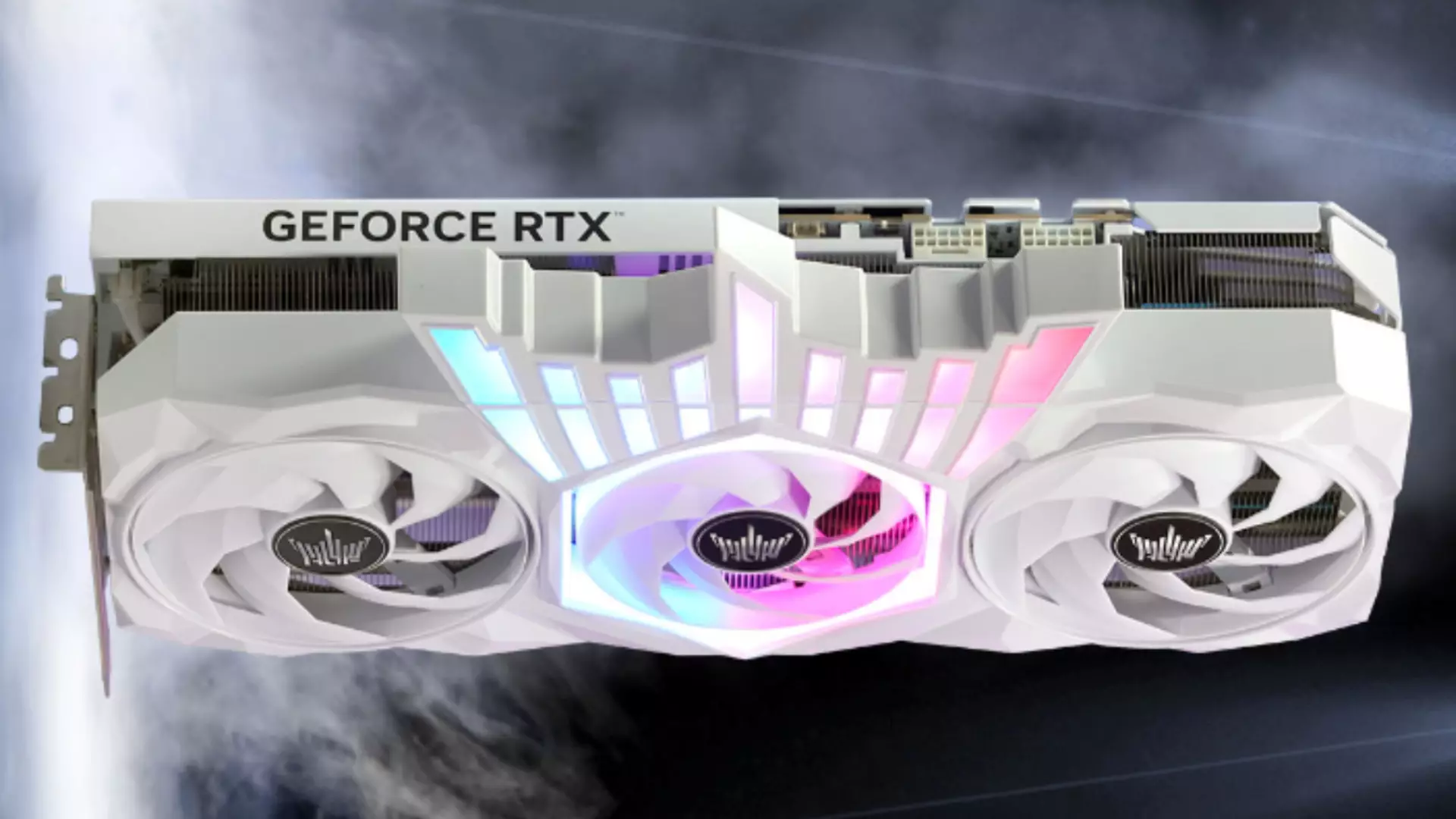The Galax RTX 5090 D HOF XOC Edition exemplifies how technological bravado can push the boundaries of what we perceive as possible in graphics hardware. Designed exclusively for the Chinese market, this elite piece of hardware isn’t merely another graphics card; it’s a bold testament to human ingenuity and the relentless pursuit of performance. The card’s unique aesthetic, featuring a crown-like shroud, suggests a merging of royalty and authority in the realm of high-performance computing. Such design choices seem symbolic—not just of the hardware’s power but of the status it commands among enthusiasts who crave supremacy in overclocking challenges.
What makes this GPU truly exceptional isn’t just its visual flair but its engineering DNA. Overbuilt to extreme specifications, it showcases an elaborate power delivery system with a 38-phase design and dual 16-pin 12V-2×6 connectors. This robust infrastructure underpins its capability to sustain formidable wattage loads, making it a playground for those seeking to shatter records. The 12-layer PCB further emphasizes the meticulous craftsmanship involved, ensuring the card’s resilience under intense thermal and electrical stresses. In essence, this isn’t ordinary hardware—this is a carefully crafted machinery for extreme experimentation and performance tyranny.
Breaking Limits: A Power Limit That Borders on the Mythical
One of the most audacious features of the Galax RTX 5090 D HOF XOC Edition is its BIOS, which reportedly supports an astronomical 2,001 W power limit. For context, even the standard RTX 5090’s 575 W TDP was startling—yet this masterpiece hints at a power ceiling that’s arguably more fantasy than reality. The shared screenshots circulating within overclocking communities suggest that BIOSes enabling such high limits are not just rumors but tangible shortcuts into the realm of the superhuman.
However, reality tempers fantasy. Hardware limitations and safety protocols mean this power ceiling remains largely theoretical, with actual energy consumption capped at around 1,000 W by built-in hardware limits. Still, the mere existence of such an overvoltage capacity signifies a mindset unencumbered by conventional bounds. It’s a statement: the true frontier of GPU performance lies in those marginal gains that others are too cautious to pursue. This attitude defines the spirit of extreme overclocking—embracing risk for the promise of unmatched performance.
Overclocking Brilliance: Pushing the Envelope to New Heights
The real-world implications of such radical hardware specifications are evident in overclocking feats achieved by teams like OGS. By utilizing the BIOS with elevated power limits and supplementing cooling with liquid nitrogen, they pushed this graphics card to a mind-boggling 3,650 MHz core clock—more than 1,200 MHz above stock speeds. Such a leap in frequency demonstrates what’s achievable when hardware and mindset align with a shared obsession for dominance.
This overclocking achievement translated into a record-breaking 3DMark Port Royal score of 47,469 points, motivating rival teams to surpass it with scores of around 47,598—using even standard RTX 5090 setups. This continuous competition embodies the essence of enthusiast-driven innovation, where hardware is manipulated to its limits not just for bragging rights but as a testament to human curiosity and skill.
Yet, questions about accessibility loom large. The BIOS enabling these high power figures is passed discreetly within the community—likely in sealed envelopes or via clandestine links—highlighting the exclusivity and clandestine nature of such endeavors. It’s a world where the line between extraordinary achievement and risk is razor-thin, and only the most daring dare to partake.
The Future of GPU Tech or Overclocking Playground?
The Galax RTX 5090 D HOF XOC Edition embodies the intersection of innovation, rivalry, and audacity. While it’s unlikely to see mass adoption beyond elite enthusiast circles, it raises critical questions about the direction of GPU development. Will future hardware be engineered with consumable overclocking potential in mind? Or is this frontier reserved for an ultra-privileged few willing to push their PSU, cooling, and risk appetite to the brink?
What’s clear is that this GPU isn’t just a product; it’s a statement. It challenges the industry to consider how far performance can be pushed and whether safety or longevity should play a role in the conversation. Ultimately, it’s a reminder that technology’s most exciting advancements often come wrapped in controversy—driven by passion, ambition, and the unyielding desire to be fastest, highest, and most powerful.

